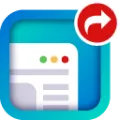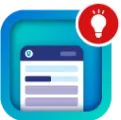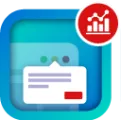Application Access Request
- From your personal settings, enter Advanced User Details in the Quick Find box, then select Advanced User Details. No results? Enter Personal Information in the Quick Find box, then select PersonalInformation.
- In the OAuth Connected Apps section, you can:View information about each connected app that you’ve granted access to, the number of times, and the last time the app attempted to access your information. NoteA connected app can be listed more than once. Each time you grant access to an app, it obtains a new access token. Requests for refresh tokens increase the use count. Also, if an OAuth 2.0 connected app requests multiple tokens with different scopes, you see the same app multiple times.Even if the connected app tried and failed to access your information because it couldn’t log in, the Use Count and Last Used fields are updated.Each connected app allows five unique approvals per user. When a sixth approval is made, the oldest approval is revoked. For OAuth 1.x, each issued access token counts as an approval and is listed as a separate entry in the table. For OAuth 2.0, the table lists each refresh token that counts as an approval. Other flows, such as user-agent flows, might also count as approvals. Avoid having an application using connected apps from requesting OAuth 1.x access tokens or OAuth 2.0 refresh tokens more than once for each device. That way the limit of five unique approvals doesn’t impact your org.Click Revoke to revoke the app’s access. After you revoke the app, it can no longer access your Salesforce data. Important Revoke all access tokens for a particular app to prevent it from accessing your Salesforce data.
- View information about each connected app that you’ve granted access to, the number of times, and the last time the app attempted to access your information. NoteA connected app can be listed more than once. Each time you grant access to an app, it obtains a new access token. Requests for refresh tokens increase the use count. Also, if an OAuth 2.0 connected app requests multiple tokens with different scopes, you see the same app multiple times.Even if the connected app tried and failed to access your information because it couldn’t log in, the Use Count and Last Used fields are updated.Each connected app allows five unique approvals per user. When a sixth approval is made, the oldest approval is revoked. For OAuth 1.x, each issued access token counts as an approval and is listed as a separate entry in the table. For OAuth 2.0, the table lists each refresh token that counts as an approval. Other flows, such as user-agent flows, might also count as approvals. Avoid having an application using connected apps from requesting OAuth 1.x access tokens or OAuth 2.0 refresh tokens more than once for each device. That way the limit of five unique approvals doesn’t impact your org.
- A connected app can be listed more than once. Each time you grant access to an app, it obtains a new access token. Requests for refresh tokens increase the use count. Also, if an OAuth 2.0 connected app requests multiple tokens with different scopes, you see the same app multiple times.
- Even if the connected app tried and failed to access your information because it couldn’t log in, the Use Count and Last Used fields are updated.
- Each connected app allows five unique approvals per user. When a sixth approval is made, the oldest approval is revoked. For OAuth 1.x, each issued access token counts as an approval and is listed as a separate entry in the table. For OAuth 2.0, the table lists each refresh token that counts as an approval. Other flows, such as user-agent flows, might also count as approvals. Avoid having an application using connected apps from requesting OAuth 1.x access tokens or OAuth 2.0 refresh tokens more than once for each device. That way the limit of five unique approvals doesn’t impact your org.
- Click Revoke to revoke the app’s access. After you revoke the app, it can no longer access your Salesforce data. Important Revoke all access tokens for a particular app to prevent it from accessing your Salesforce data.





